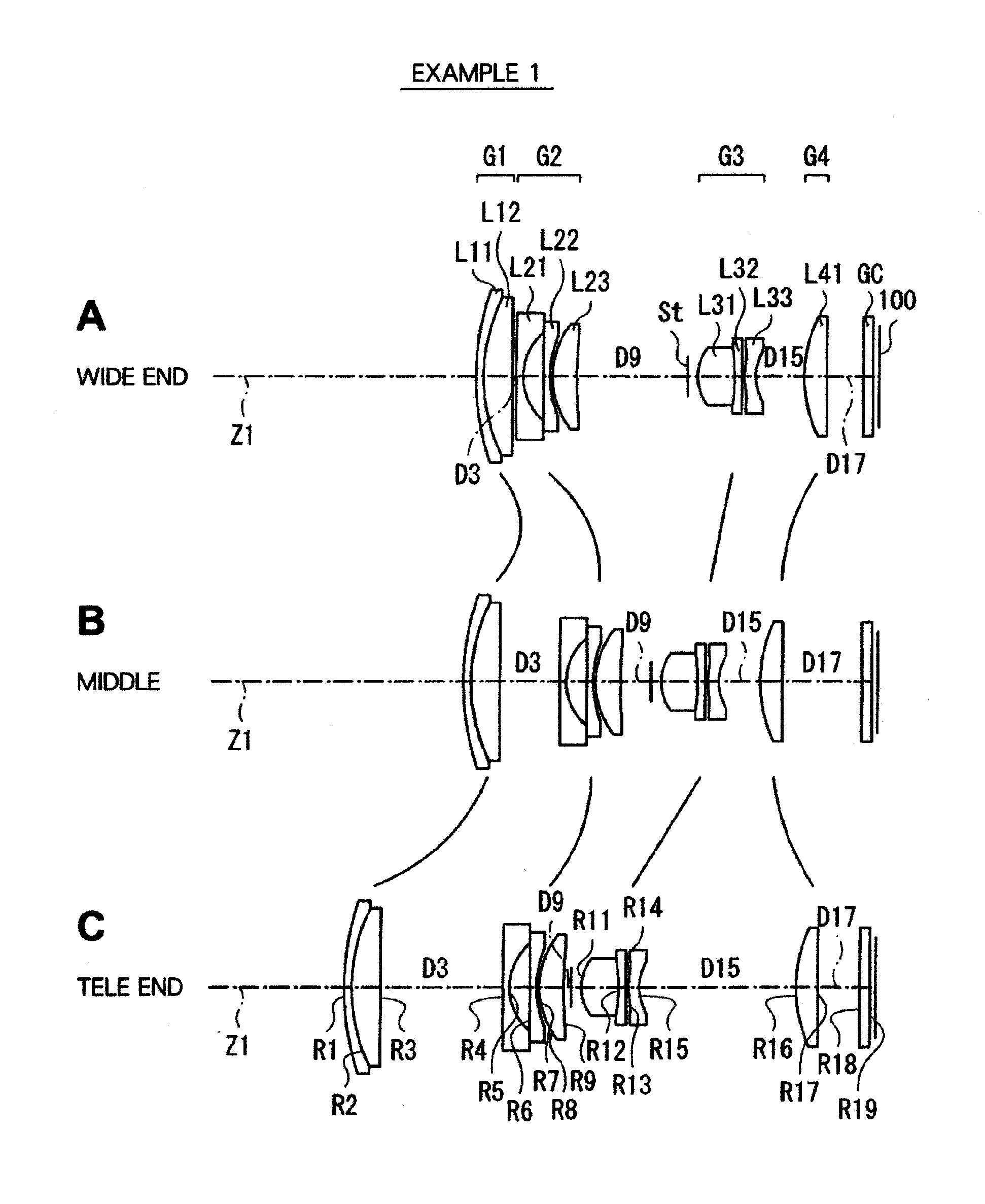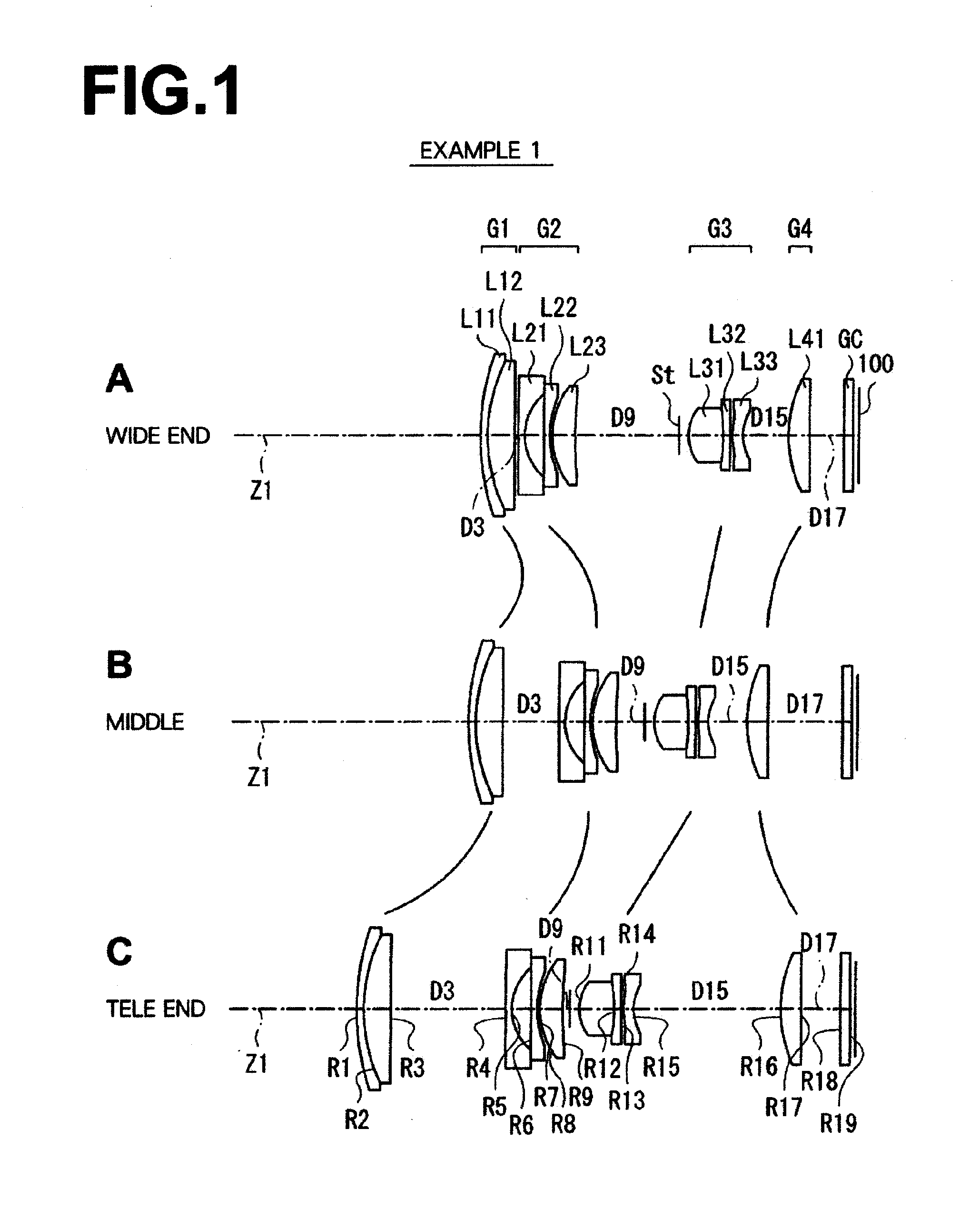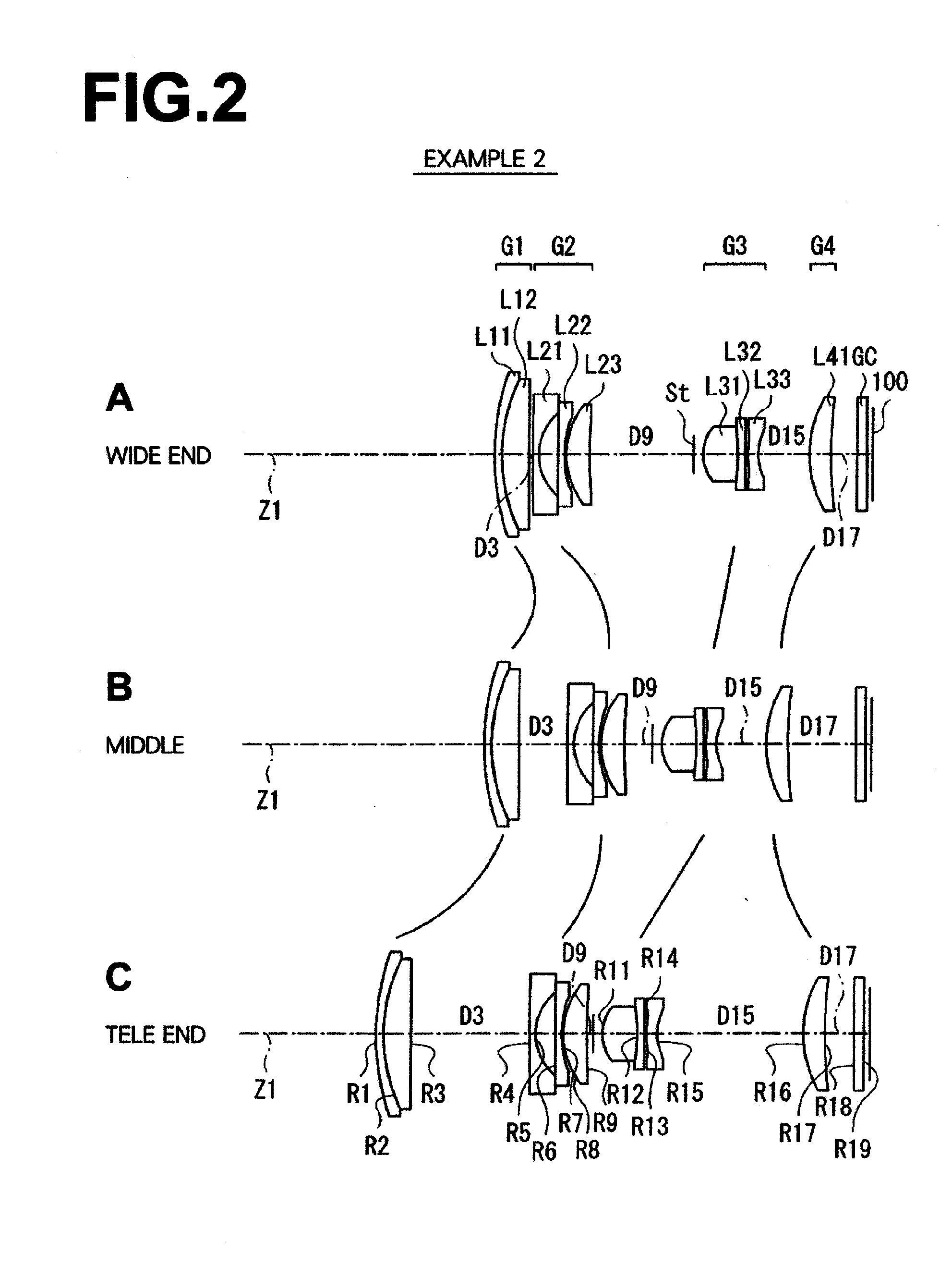Zoom lens and imaging apparatus
a zoom lens and zoom lens technology, applied in the field of zoom lens and imaging apparatus, can solve the problems of large amount of movement of each group, insufficient wide angle of view, and achieve wide angle of view , the effect of high variable magnification ratio and small aberration fluctuation
- Summary
- Abstract
- Description
- Claims
- Application Information
AI Technical Summary
Benefits of technology
Problems solved by technology
Method used
Image
Examples
numerical example 1
[0259][Table 1] through [Table 3] show specific lens data corresponding to the structure of the zoom lens illustrated in FIG. 1. Specifically, [Table 1] shows basic lens data, and [Table 2] and [Table 3] show other data. In the lens data of [Table 1], the column of surface number Si shows the surface number of i-th surface (i=1 through 19) of the zoom lens of Example 1, when the object-side surface of the most-object-side element is the first surface, and surface numbers sequentially increase toward the image side. The column of curvature radius Ri shows the value (mm) of the curvature radius of the i-th surface, sequentially from the object side. The curvature radius Ri in [Table 1] corresponds to sign Ri in FIG. 1. Similarly, the column of surface interval Di shows an interval (mm) between the i-th surface Si and the (i+1) th surface Si+1 on the optical axis, sequentially from the object side. The column Ndj shows the refractive index of j-th optical element from the object side f...
numerical examples 2 through 12
[0272][Table 4] through [Table 6] show, as Numerical Example 2, specific lens data corresponding to the structure of the zoom lens illustrated in FIG. 2 in a manner similar to Numerical Example 1. Similarly, [Table 7] through [Table 36] show, as Numerical Examples 3 through 12, specific lens data corresponding to the structure of the zoom lenses illustrated in FIGS. 3 through 12.
[0273]In the zoom lenses of Numerical Examples 2 through 8, the same surfaces as the aspheric surfaces in the zoom lens of Numerical Example 1 are aspheric. Further, aperture stop St moves together with the lens group G3.
[0274]However, in the zoom lenses of Numerical Examples 9 through 12, the number of aspheric surfaces is larger than the number of the aspheric surfaces in the zoom lens of Numerical Example 1. For example, in the zoom lens of Numerical Example 9, both sides S8, S9 of the most-image-side lens (positive lens L23) in the second lens group G2 and the image side surface S17 of the positive lens ...
PUM
 Login to View More
Login to View More Abstract
Description
Claims
Application Information
 Login to View More
Login to View More - R&D
- Intellectual Property
- Life Sciences
- Materials
- Tech Scout
- Unparalleled Data Quality
- Higher Quality Content
- 60% Fewer Hallucinations
Browse by: Latest US Patents, China's latest patents, Technical Efficacy Thesaurus, Application Domain, Technology Topic, Popular Technical Reports.
© 2025 PatSnap. All rights reserved.Legal|Privacy policy|Modern Slavery Act Transparency Statement|Sitemap|About US| Contact US: help@patsnap.com



